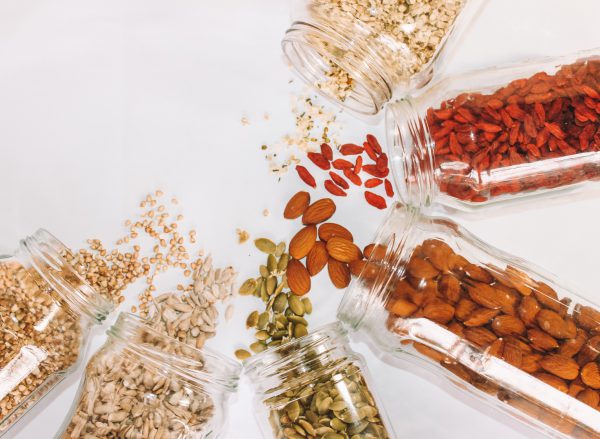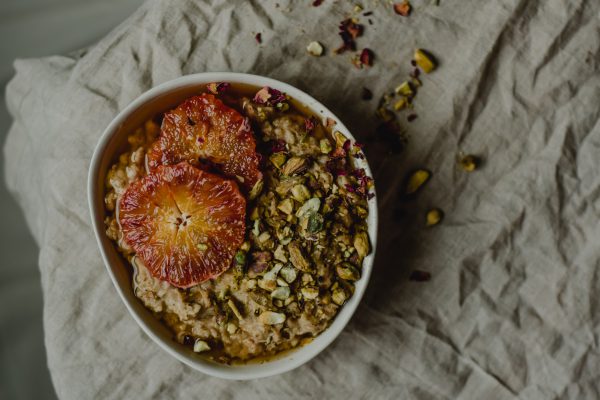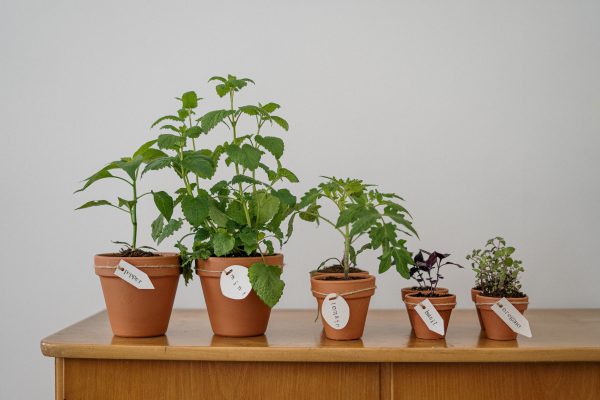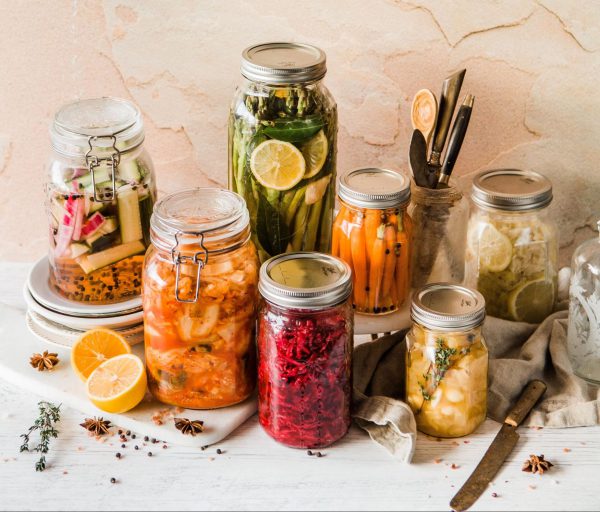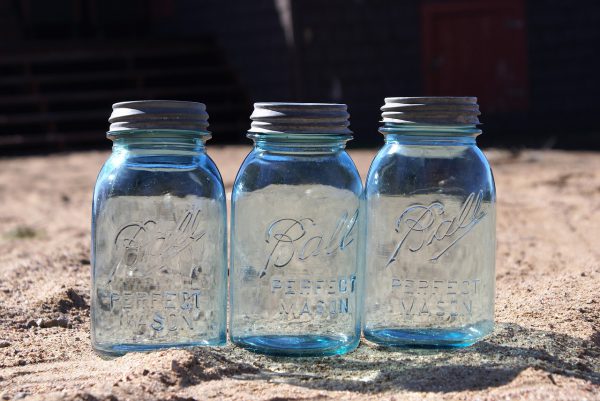Last Updated on November 18, 2022
Mortar and pestles have been used for thousands of years in many different cultures worldwide. After all, crushing food before eating is likely one of the first things humankind discovered about cooking, and the mortar and pestle were likely discovered right after!
This ancient tool is excellent for making curry pastes, pesto sauces, guacamole, or grinding whole seed spices. It’s actually one of the 12 tools we consider must-haves in the kitchen.
After you season or cure your brand new mortar and pestle, there are a couple of steps you need to take to make sure you keep it in mint condition.
Know Your Mortar and Pestle
There are thousands of different styles of this ancient tool worldwide and each kind has a different cleaning and care routine. If you haven’t decided which one is best for you, check out our guide on the best mortar and pestle sets. You must know exactly what material your mortar is made of to be able to clean it properly. Different kinds have different pros and cons — if you want to learn more about each, make sure you take a look at our guide on how to choose between them.
How to Clean a Mortar and Pestle
If your mortar and pestle came with instructions on how to clean it and care for it, read them and follow the tips. But here we’ll share some general instructions that you can’t go wrong with.
We’ll start with the two that are trickiest to clean — granite and volcanic rock. The latter is also known as the Mexican molcajete.
How to Clean a Granite Mortar and Pestle
Natural granite has a less porous surface than some other natural rocks that mortars and molcajetes are made of, such as volcanic rock. So you actually can apply soap to your granite mortar and pestle without worrying about it leaving a smell.
Here is a step-by-step guide to how to clean your granite mortar and pestle:
- Water wash: After you’re done using your mortar and pestle —preferably immediately after— thoroughly rinse the mortar and pestle with water.
- A little bit of soap: Use a sponge and unscented soap to clean the mortar and pestle thoroughly.
- Rinse the soap thoroughly: Rinse under warm water until you’re sure no soap residue is left on the mortar or the pestle.
- Make sure to dry it: Your mortar and pestle must be completely dry before storing. Granite is not as porous as volcanic rock so drying it is easier than drying a molcajete. After washing your mortar and pestle, use a towel to dry excess surface water. Leave it to dry for a while, flipping it upside down to dry it even better.
How to Clean a Molcajete
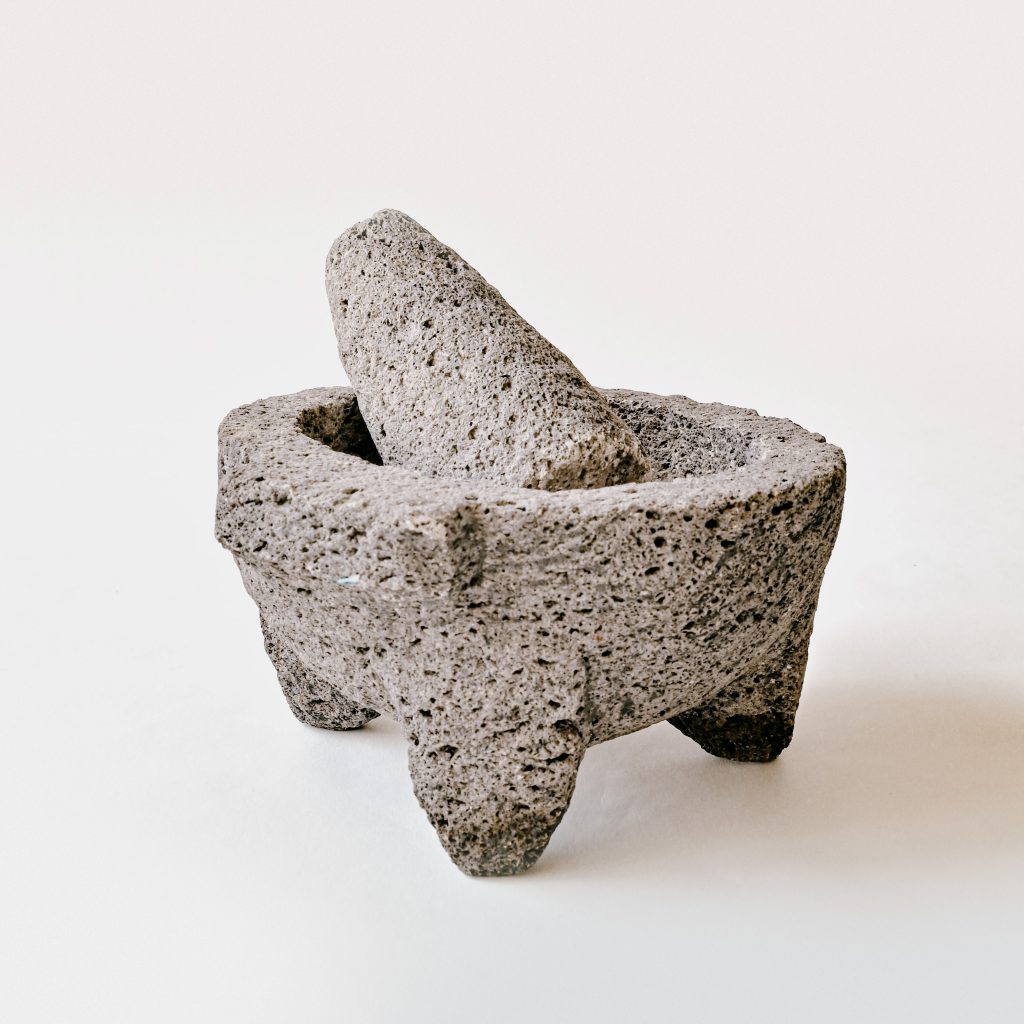
The most important thing to keep in mind when you’re cleaning a volcanic rock molcajete is not to use soap and allow it to dry completely before you put it in a cupboard.
Here is a step-by-step guide to how to clean your molcajete:
- Water wash: After you’re done using your molcajete —preferably immediately after— start by thoroughly rinsing it.
- Zero soap policy: Just like you should avoid soap when cleaning a cast-iron skillet, you shouldn’t apply any soap while cleaning molcajetes. The porous surface of the volcanic rock has tiny holes that trap the taste and odor of the soap.
- A kitchen brush: A firm kitchen brush is the only tool you need while you’re cleaning your molcajete. Get a brush for your molcajete that you won’t be using for other cleaning tasks; this way, you will ensure that no soap contaminates it.
- Make sure to dry it: Your molcajete must be thoroughly dry before you store it. That’s because the tiny pores on its surface are a great habitat for microscopic life forms if they retain food and moisture. So, if you skip brushing, rinsing, and drying your molcajete correctly, it might get contaminated by mold or other stuff. You can prevent this easily by using a towel to dry excess surface water after cleaning your molcajete. Leave it to dry for a while, flipping it upside down to dry it even better.
How to Clean Any Other Type of Mortar and Pestle
- A mortar and pestle made from wood or natural stones, such as granite, may require the same care as volcanic rock
- You can clean a ceramic, marble, or copper mortar and pestle with a regular dishwashing routine.
- Ceramic, stainless steel, and marble mortars can go into the dishwasher
- Copper or wooden mortar and pestles can be cleaned manually, just using soapy water.
Some Bonus Tips
Bad odors on your mortar and pestle: As you use your mortar and pestle, the aromatics you grind in it will leave their scents and taste behind. This can lend a pleasant taste to the next thing you grind in it. But, sometimes, the flavors from your previous meal can become too strong. You can easily fix this by briefly curing your mortar and pestle again. Use rice to remove the leftover particles from the holes and then add the salt, garlic & pepper trio and allow them to work their magic.
Protect your surfaces from your mortar and pestle: We love a mortar and pestle’s rough feel for a reason: it makes grinding food down very easy. However, this can be rough on your countertops. To protect them from scratching or even cracking, place a towel underneath the mortar to avoid damaging surfaces. You can also purchase a mortar and pestle with a built-in countertop protector like the KROK and its cork bottom.
Off to Make Some Paste
The care routine for a mortar and pestle is different from the care your everyday kitchen equipment needs. But once you get the hang of it, you’ll see that looking after one is a piece of cake.
Plus, incorporating a mortar and pestle set into your arsenal is a great way to expand your cookbook. If you’re looking for some inspiration on how to do that, check out these 15 recipes to prepare with your mortar and pestle.


